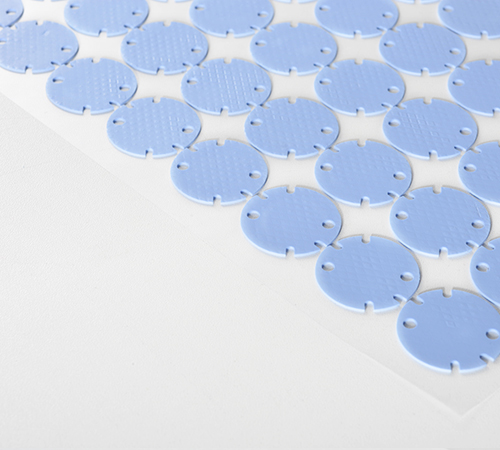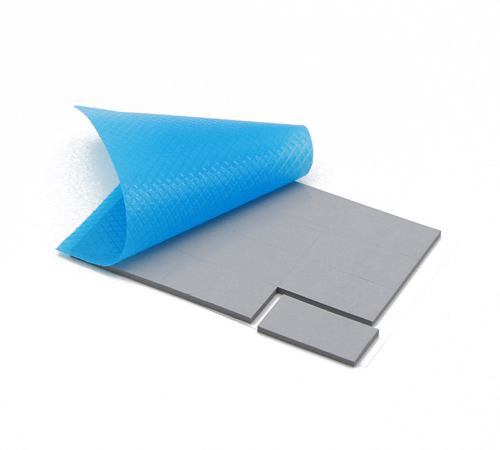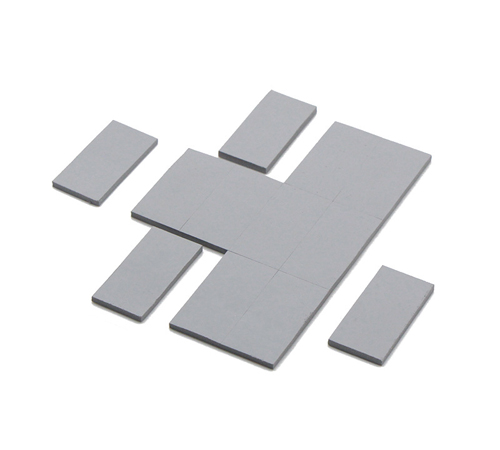Can Thermal Pads Be Reused?
Author:NFION Thermal Solution
Date:2025-05-26 13:44:48
Among the many materials used in electronic thermal management, thermal interface pads have become a key solution between heat-generating components (such as processors, power amplifiers, and power modules) and heat sinks, thanks to their compliance and moderate thermal conductivity. However, a common question from engineers and procurement professionals is: "Can thermal pads be reused?" While this may seem like a simple question, it involves multiple factors, such as material properties, interface resistance, reliability testing, and maintenance strategy. This article explores the core logic behind this question, offering scientific insights and practical guidance.
I. Why Is There Debate Over Reusing Thermal Pads?
Unlike thermal grease or thermal gel—which are inherently non-reusable—thermal pads, due to their solid-state form and ease of assembly/disassembly, can sometimes appear reusable during maintenance or component replacement. But does “looking intact” mean it’s safe to reuse? The answer is more complex.
II. What Factors Determine Whether a Thermal Pad Can Be Reused?
To answer this question scientifically, we must evaluate the following critical aspects:
1. Material Type and Physical Property Changes
Thermal pads typically consist of a silicone base, thermally conductive fillers (e.g., alumina, boron nitride), and reinforcement layers like fiberglass. During reuse, the material may exhibit:
● Compression Set: Permanent deformation under prolonged pressure can cause poor contact.
● Surface Tearing or Residue: Repeated disassembly can lead to damage or contamination, reducing thermal efficiency.
● Thermal Aging: Prolonged high-temperature operation can harden the silicone or cause oil separation, degrading performance.
2. Application Environment and Stress Conditions
In high-power-density systems with frequent thermal cycling or microvibrations, pads degrade faster. Conversely, in lower-stress environments, limited reuse might be feasible, but careful evaluation is still required.
3. Interface Contact Quality
Thermal pads are meant to fill microscopic gaps and ensure full surface contact. If a reused pad no longer conforms properly or changes in thickness lead to air gaps, thermal efficiency can drop significantly—risking localized overheating.
III. Common Misconceptions About Reusing Thermal Pads
✘ "It Looks Fine, So It's Reusable"
Visual inspection alone is an unreliable indicator. Performance degradation often occurs at the microstructural level or within the material, and may not be visibly detectable.
✘ "It Saves a Little Cost"
Attempting to save a few dollars by reusing a thermal pad on a high-performance device can result in exponentially greater losses due to thermal failure—a classic low ROI decision.
IV. When Is Limited Reuse of a Thermal Pad Acceptable?
While reuse is not generally recommended, it might be conditionally acceptable in low-risk scenarios, such as:
● Prototyping or functional testing
● Minimal assembly/disassembly cycles under controlled pressure
● Pads with high elasticity and fatigue resistance (e.g., reinforced with fiberglass)
● Pads that pass post-removal inspections for thickness, surface condition, and interface resistance
Note: Even under these conditions, using a new pad for long-term deployment is highly advised.
V. Expert Tips: How to Reduce Risks If Reuse Is Unavoidable?
● Establish a Material Lifecycle Policy: Define usage limits and inspection standards in maintenance protocols.
● Choose Resilient Materials: Use pads with excellent compression recovery and minimal stress relaxation.
● Design for Easy Maintenance: Minimize disassembly needs in hardware design.
● Use Diagnostic Tools: Infrared thermography can help detect performance degradation in reused pads.
Conclusion: Thermal Pads Are Not Rubber Bands — Reuse With Caution
While thermal pads may appear reusable due to their physical stability, they are not intended to be recycled casually. From the standpoint of thermal safety, product reliability, and engineering professionalism, reusing thermal pads is not recommended, especially in high-power or mission-critical applications.
What truly matters is not saving a few dollars per pad, but maintaining long-term system reliability through consistent thermal performance. Think of thermal interface materials as your first line of defense in thermal design — treat them with the level of care they deserve.
For high-resilience, low thermal resistance thermal pad products or customized thermal interface solutions, feel free to contact us — we provide expert support tailored to your application needs.
 CN >
CN >



